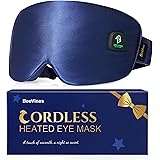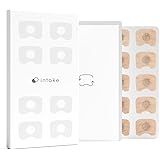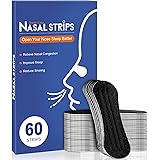Struggling with restless nights or groggy mornings? You are certainly not alone. Many individuals find themselves caught in a cycle of poor sleep, constantly searching for ways to improve their slumber and wake up feeling refreshed. While the video above introduces some innovative devices, understanding the broader landscape of **sleep gadgets** can empower you to make informed choices for your nightly routine.
Poor sleep isn’t just an inconvenience; it can severely impact your daily productivity, mood, and overall health. Fortunately, advancements in **sleep technology** offer a promising array of solutions. From sophisticated brain trackers to intelligent alarm clocks, these devices aim to help you fall asleep faster, stay asleep longer, and wake up more naturally.
Understanding Your Sleep with Advanced Tracking Gadgets
The first step towards achieving **better sleep** often involves understanding your current sleep patterns. Several **sleep gadgets** excel at this, providing detailed insights that can guide your efforts for improvement.
Brainwave Monitoring: The Sleep Shepherd Headband
Imagine if you could actively soothe your brain into a deeper state of rest. The Sleep Shepherd headband, as highlighted in the video, attempts to do just that. This innovative gadget uses electroencephalography (EEG) technology to track your brainwaves throughout the night. It then employs gentle binaural beats — subtle sound frequencies played through integrated headphones — to guide your brain into optimal sleep states.
- **How it Works:** Sensors within the soft headband monitor your brain activity. As you drift through different sleep stages (light, deep, REM), the companion app records this data.
- **Personalized Feedback:** The app generates a “sleep score” and provides insights into the quality and duration of your various sleep cycles. It can even offer recommendations tailored to your unique sleep profile.
- **Active Soothing:** Beyond just tracking, the Sleep Shepherd provides subtle auditory stimulation to encourage deeper, more restful sleep, making it a proactive tool for improving sleep quality.
While the idea of wearing a headband to bed might sound unusual, the potential benefits of directly influencing brain activity for improved rest are significant. This type of **sleep technology** moves beyond passive tracking to active intervention.
In-Bed Sensors: Withings Here System and Beddit
For those who prefer less intrusive tracking, in-bed sensors offer a fantastic alternative. These devices typically slip under your mattress or sheet and monitor your sleep without direct contact with your body.
- **Withings Here System:** As demonstrated, this system uses a mat placed under your mattress to track movements, heart rate, and breathing patterns. It maps out your sleep architecture—how much time you spend in light, deep, and REM sleep. The system then uses this data to wake you during your lightest sleep phase within a set window, making your mornings feel more natural and less jarring.
- **Beddit Sleep Monitor:** Similarly, Beddit (now part of Apple) is another popular choice mentioned in the video, lauded by experts like Dr. Bryce Ward. This thin sensor strip goes directly under your sheet and tracks sleep time, heart rate, breathing, snoring, and even bed temperature. It also provides a comprehensive “Beddit Sleep Score,” offering actionable advice to enhance your nightly rest.
These sophisticated sensors are invaluable for identifying patterns like restlessness, sleep interruptions, or even potential sleep disorders. Analyzing your **sleep patterns** over time can reveal crucial information about lifestyle factors that might be impacting your rest.
Smartphone Sleep Tracking Apps: Sleep Cycle and Beyond
If you’re on a budget or simply want to try out **sleep tracking** without investing in dedicated hardware, smartphone apps like Sleep Cycle are an excellent starting point. As the male host demonstrated, these apps use your phone’s microphone or accelerometer to monitor your movements and sounds throughout the night.
- **Smart Alarm Functionality:** The core feature of these apps is their intelligent alarm clock. Instead of waking you at a fixed, potentially disruptive time, they analyze your sleep stages and trigger the alarm during a period of light sleep within a 10-20 minute window before your set wake-up time. This mimics a natural awakening, reducing morning grogginess.
- **Auditory and Movement Tracking:** By listening to your movements and even snoring, these apps build a picture of your sleep quality. You can often review graphs showing your sleep cycles, identifying periods of deep sleep, light sleep, and wakefulness.
- **Accessibility:** Many such apps offer a free version with core features, making **improving sleep** more accessible to everyone.
While less precise than dedicated hardware, these apps provide a convenient and often surprisingly accurate way to gain initial insights into your **sleep health**.
The Power of Light: Wake-Up Lights and Light Therapy
Waking up in a dark room, especially during early morning shifts, can feel like a jolt to the system. This is where **sleep gadgets** utilizing light play a crucial role in regulating your body’s natural **circadian rhythm**.
Sunrise Simulation: The Philips Wake-Up Light and Alternatives
The Philips Wake-Up Light, a personal favorite of the gadget expert in the video, offers a gentle and natural way to start your day. Instead of an abrupt, noisy alarm, it simulates a gradual sunrise.
- **Natural Awakening:** Approximately 30 minutes before your alarm time, the light slowly brightens, mimicking the natural dawn. This process subtly cues your body to decrease melatonin production and increase cortisol, preparing you to wake up calmly and energized.
- **Reduced Alarm Dependency:** Many users find they wake up naturally before the audible alarm even sounds, leading to a more pleasant start to their day.
- **Beyond Philips:** Other brands, including the Withings Here system mentioned earlier, also incorporate similar wake-up light functionalities, often paired with their sleep tracking capabilities for a holistic approach.
Imagine no longer being ripped from deep sleep by a blaring alarm. A **wake-up light** transforms your morning, making the transition from sleep to wakefulness significantly smoother.
Blue Light Therapy for Energy
Conversely, specific light wavelengths can also be used to boost alertness and energy during the day. Just as blue light from screens can disrupt sleep at night, a controlled dose in the morning can be beneficial.
- **Morning Boost:** Devices emitting blue light, often compact and portable, can be used for a short session in the morning. This bright light signals to your brain that it’s daytime, helping to suppress melatonin and enhance alertness.
- **Counteracting Fatigue:** For individuals who struggle with morning grogginess or experience the effects of seasonal affective disorder (SAD), targeted light therapy can provide a much-needed energy lift, aiding in overall **sleep health** by better defining day and night for your body.
Utilizing light wisely is a powerful yet often overlooked aspect of optimizing your **sleep patterns** and overall well-being. By harnessing both simulated sunrises and targeted light therapy, you can actively influence your body’s natural rhythms for more vibrant days and more restful nights.
Choosing the Right Sleep Gadget for You
With a wide range of **sleep gadgets** available, from those costing around $100 to more premium options reaching $600-$700, selecting the right tool depends on your specific needs and budget.
- **Identify Your Primary Sleep Challenge:** Do you struggle to fall asleep? Stay asleep? Wake up refreshed? Or do you simply want to understand your sleep better? Different gadgets target different aspects of the sleep cycle.
- **Consider Your Comfort Level:** Are you comfortable wearing a headband to bed? Or do you prefer a non-contact sensor?
- **Evaluate Data vs. Intervention:** Some devices are purely for tracking and insight, while others actively try to influence your sleep (like the Sleep Shepherd or wake-up lights).
- **Check for App Compatibility:** Most modern **sleep technology** relies on companion apps. Ensure the app is user-friendly, provides clear data, and is compatible with your smartphone.
Exploring these **sleep gadgets** can be a game-changer for anyone seeking **better sleep**. By embracing the innovations in **sleep technology**, you can move from merely surviving restless nights to thriving on truly restorative slumber.
Maximizing Your Rest with Sleep Gadgets: Q&A
What are sleep gadgets?
Sleep gadgets are technological devices designed to help you improve your sleep. They can track your sleep patterns, help you fall asleep faster, or wake you up more gently.
Why should I consider using sleep gadgets?
Sleep gadgets can help you understand your sleep better and address issues like restless nights or groggy mornings. By improving your sleep, they can boost your daily productivity, mood, and overall health.
How do sleep gadgets help me understand my sleep?
Many sleep gadgets track various aspects of your sleep, such as brain activity, movement, heart rate, or breathing patterns. They then provide detailed insights into your sleep stages and overall sleep quality.
What is a sunrise alarm clock?
A sunrise alarm clock simulates a gradual sunrise by slowly brightening before your set alarm time. This gentle light helps your body naturally decrease melatonin and prepare to wake up calmly, reducing morning grogginess.
Can I track my sleep without buying expensive devices?
Yes, you can use smartphone sleep tracking apps, such as Sleep Cycle, which often have free versions. These apps utilize your phone’s sensors to monitor your sleep patterns and can offer a smart alarm function.








